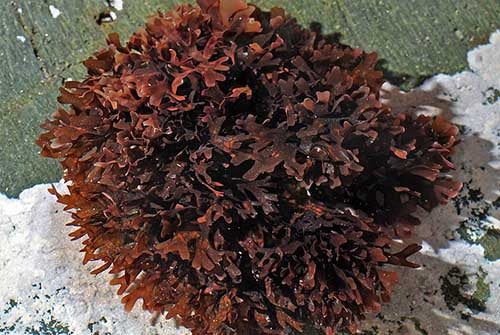
Sea Moss - A Seaweed in the Spotlight
Share
I tend to ignore health trends until they have been around for at least a few months, ideally at least a year. Many herbs/superfoods/supplements/diets become fads and they burn out of the collective conversation with weeks.
Sea Moss is one of those trends that I noted, and provided a bulk option to sell to customers, until there was a noticeable increase in people asking about it, and even more importantly, sharing with me the health benefits they are noticing when consuming sea moss regularly.
For example, one customer who is also a personal fitness trainer was purchasing some of the bulk Irish Sea Moss we carry and when I asked him if he'd been using it, how he'd been preparing it, and what he'd noticed from taking it, I was very interested in learning more. He was preparing a gel by simmering the sea moss in water and then taking a tablespoon of the gel daily, and he had noticed an increase in energy as well as increased flexibility in his knees that allowed him to squat lower without pain than he'd been able to in years.
When I read more about this sea plant, I found that these are both qualities other people have reported in their use of sea moss gel over time. Its high mineral content is notable, as a sea plant that is widely consumed around the globe. It also contains polysaccharides that produce a gel that can be healing to the mucosal membranes like the throat, stomach, and intestines, as well as stimulating a reflex response for lubrication in areas like the lungs and joints.
These properties seem to be true in two different seaweeds known as "sea moss," Irish sea moss (Chondrus crispus) which grows primarily on the shores of the North Atlantic Ocean in cooler waters, and Jamaican sea moss (Gracilaria spp.) which grows primarily in the warmer Caribbean waters around St. Lucia and Jamaica and further south to Venezuela.
Irish sea moss is a tufted seaweed with branching fronds that are a reddish-green color when growing and dries to a dark purple color. This sea vegetable grows on rocks just below the tideline and typically has a stronger scent and flavor than its relative to the south. It is typically harvested during the summer months at low tide.
Jamaican sea moss has a range of colors and has spiny blade-like fronds that typically dry to a yellow or light purple color, although there is a variety of hues it can come in. It grows from rocks also, but can be grown on ropes in the ocean for farming, or grown in salt water tanks. The wild-harvested or naturally farmed seaweeds are preferred to tank-grown.
Nutritionally, like many sea vegetables, sea moss has many vitamins and minerals, including fiber, zinc, magnesium, phosphorous, iron, calcium, vitamin B2, and vitamin B12. Sea moss is also a good source of iodine and other micronutrients which are important for thyroid health, as well as being rich in antioxidants, which help protect your cells from oxidative damage. This nutrient profile could be part of why many people feel an increase in energy and vitality, and even the claim by many Caribbean people that sea moss increases their stamina and sex drive. Many people also notice benefits in their skin health.
When you read about this sea plant, there is a lot of confusion about its name relative to its genus and species, but the truth is as long as it’s good quality and from a reputable source, it seems to me that Sea Moss in general can be beneficial for your health. The Irish Sea Moss has a more limited and seasonal supply and has a stronger smell and flavor, and it has a slightly different nutrient profile, but likely there is a range in the nutrition within the species as well. Iron levels appear to be higher in the Irish version, so if you need to get your iron levels up this might be a better choice. Also, you get the most benefit from the Irish sea moss if you powder or boil & blend the sea moss to form a gel and consume that. A tablespoon of the gel a day or a ½-1 teaspoon of the powder is typical. To make the gel: boil 1 Tbsp dry, cut sea moss to 1 cup water and simmer for 10 mins. Turn off heat and allow to cool. Blend in a blender until smooth. Store in the fridge for up to a week.
For the Jamaican variety, you can soak the fronds for several hours or overnight in clean room temperature water and then drain and blend the whole fronds. Once it sits in the fridge it will form the gel. I typically recommend a tablespoon of the gel a day. A half teaspoon to a teaspoon of the powder should be sufficient.
The only potential downside to consuming too much of this sea plant I could find is consuming too much iodine which can push the thyroid into a hyper state, so just stick within the normal range of consumption and you should be fine.
I hope this article was helpful for understanding better the potential benefits of sea moss, and its different sources/growing regions. It seems to deserve its reputation as a superfood and fits that category of what could be deemed a “functional food.” This sea vegetable can add to our nutritional intake while also offering certain health benefits that arise from that nutritional profile and other constituents.

The image above is of a Jamaican sea moss, Gracilaria spp.

This image is of a Irish sea moss plant, Chondrus crispus
